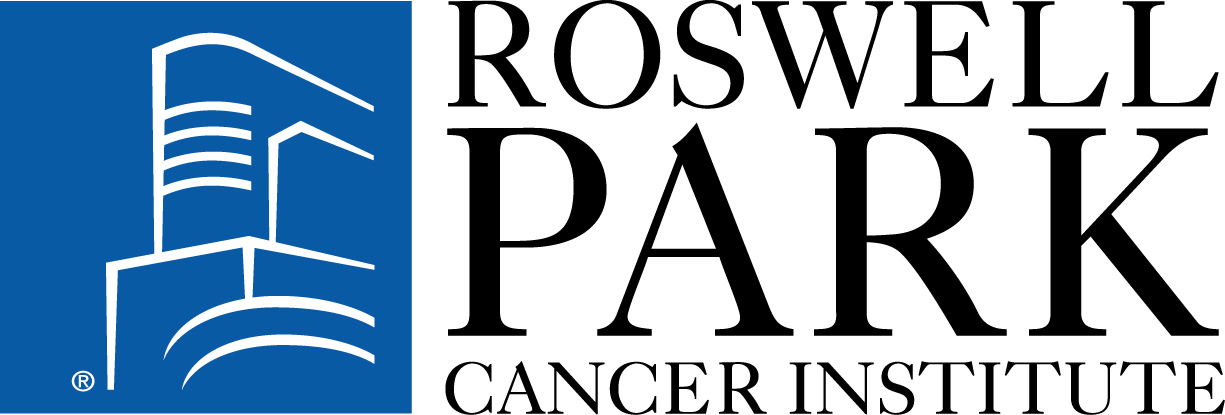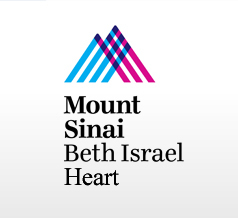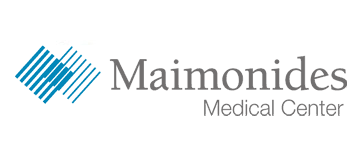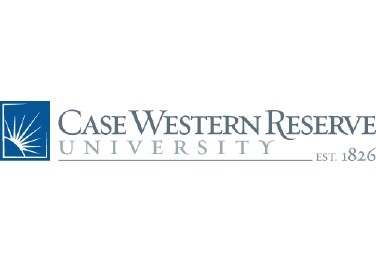Fulvestrant With or Without Bortezomib in Patients With Inoperable Locally Advanced or Metastatic Estrogen Receptor Positive Breast Cancer
| Status: | Active, not recruiting |
|---|---|
| Conditions: | Breast Cancer, Cancer |
| Therapuetic Areas: | Oncology |
| Healthy: | No |
| Age Range: | 18 - Any |
| Updated: | 10/7/2017 |
| Start Date: | May 26, 2010 |
A Randomized Phase II Study of Fulvestrant vs. Fulvestrant in Combination With Bortezomib in Women With ER Positive Metastatic Breast Cancer
This randomized phase II trial studies how well fulvestrant works with or without bortezomib
in treating patients with estrogen receptor positive breast cancer that has spread to other
places in the body and cannot be removed by surgery. Estrogen can cause the growth of breast
cancer cells. Hormone therapy using fulvestrant may fight breast cancer by lowering the
amount of estrogen the body makes. Bortezomib may stop the growth of breast cancer cells by
blocking some of the enzymes needed for cell growth or by blocking blood flow to the tumor.
It is not yet known whether fulvestrant is more effective with or without bortezomib in
treating breast cancer.
in treating patients with estrogen receptor positive breast cancer that has spread to other
places in the body and cannot be removed by surgery. Estrogen can cause the growth of breast
cancer cells. Hormone therapy using fulvestrant may fight breast cancer by lowering the
amount of estrogen the body makes. Bortezomib may stop the growth of breast cancer cells by
blocking some of the enzymes needed for cell growth or by blocking blood flow to the tumor.
It is not yet known whether fulvestrant is more effective with or without bortezomib in
treating breast cancer.
PRIMARY OBJECTIVES:
I. To determine if the addition of bortezomib to fulvestrant improves median progression free
survival (PFS) compared with fulvestrant alone in postmenopausal women with estrogen receptor
(ER)-positive locally advanced inoperable or metastatic breast cancer who have disease that
is resistant to aromatase inhibitor therapy (Arms A versus [vs.] B).
SECONDARY OBJECTIVES:
I. To determine if the addition of bortezomib to fulvestrant improves the clinical benefit
rate (defined as objective response plus stable disease for at least 24 weeks from day +1).
II. To determine the percent of patients, treated with fulvestrant alone and fulvestrant plus
bortezomib, who remain progression-free 24 weeks from day +1 (Arms A vs. B).
III. To determine the overall survival of patients treated with fulvestrant alone and
fulvestrant plus bortezomib (Arms A, B, C).
IV. To determine the adverse event profile in patients treated with fulvestrant alone and
fulvestrant plus bortezomib (Arms A, B, C).
V. To determine the clinical benefit rate at 12 and 24 weeks of fulvestrant plus bortezomib
in patients who have progressed on the fulvestrant alone arm and crossover to receive the
combination (Arm C).
TERTIARY OBJECTIVES:
I. To perform an exploratory analysis of the effects of bortezomib (plus fulvestrant) in
intratumoral nuclear/cytoplasmic ER ratio, unfolded protein response (BiP), apoptosis
(cleaved caspase 3), B-cell chronic lymphocytic leukemia (CLL)/lymphoma 2 (Bcl-2) phospho
c-Jun N-terminal kinase (JNK) in patients with tumors accessible to biopsy who consent to
optional post-treatment biopsy.
II. To determine with cyclin D1 expression in pretreatment tumor specimens (from metastatic
disease or the primary tumor if the former is not available) is predictive of clinical
benefit with fulvestrant-bortezomib.
OUTLINE: Patients are randomized to 1 of 2 treatment arms (Arms A or B).
ARM A: Patients receive fulvestrant intramuscularly (IM) on day 1 (days -14, 1, and 15 of
course 1 only). Courses repeat every 28 days in the absence of disease progression or
unacceptable toxicity. Patients with progressive disease may crossover to arm C.
ARM B: Patients receive fulvestrant as in arm A and bortezomib intravenously (IV) on days 1,
8, and 15. Courses repeat every 28 days in the absence of disease progression or unacceptable
toxicity.
ARM C: Patients receive fulvestrant IM on day 1 and bortezomib IV on days 1, 8, and 15.
Courses repeat every 28 days in the absence of disease progression or unacceptable toxicity.
After completion of study therapy, patients are followed up every 3 months.
I. To determine if the addition of bortezomib to fulvestrant improves median progression free
survival (PFS) compared with fulvestrant alone in postmenopausal women with estrogen receptor
(ER)-positive locally advanced inoperable or metastatic breast cancer who have disease that
is resistant to aromatase inhibitor therapy (Arms A versus [vs.] B).
SECONDARY OBJECTIVES:
I. To determine if the addition of bortezomib to fulvestrant improves the clinical benefit
rate (defined as objective response plus stable disease for at least 24 weeks from day +1).
II. To determine the percent of patients, treated with fulvestrant alone and fulvestrant plus
bortezomib, who remain progression-free 24 weeks from day +1 (Arms A vs. B).
III. To determine the overall survival of patients treated with fulvestrant alone and
fulvestrant plus bortezomib (Arms A, B, C).
IV. To determine the adverse event profile in patients treated with fulvestrant alone and
fulvestrant plus bortezomib (Arms A, B, C).
V. To determine the clinical benefit rate at 12 and 24 weeks of fulvestrant plus bortezomib
in patients who have progressed on the fulvestrant alone arm and crossover to receive the
combination (Arm C).
TERTIARY OBJECTIVES:
I. To perform an exploratory analysis of the effects of bortezomib (plus fulvestrant) in
intratumoral nuclear/cytoplasmic ER ratio, unfolded protein response (BiP), apoptosis
(cleaved caspase 3), B-cell chronic lymphocytic leukemia (CLL)/lymphoma 2 (Bcl-2) phospho
c-Jun N-terminal kinase (JNK) in patients with tumors accessible to biopsy who consent to
optional post-treatment biopsy.
II. To determine with cyclin D1 expression in pretreatment tumor specimens (from metastatic
disease or the primary tumor if the former is not available) is predictive of clinical
benefit with fulvestrant-bortezomib.
OUTLINE: Patients are randomized to 1 of 2 treatment arms (Arms A or B).
ARM A: Patients receive fulvestrant intramuscularly (IM) on day 1 (days -14, 1, and 15 of
course 1 only). Courses repeat every 28 days in the absence of disease progression or
unacceptable toxicity. Patients with progressive disease may crossover to arm C.
ARM B: Patients receive fulvestrant as in arm A and bortezomib intravenously (IV) on days 1,
8, and 15. Courses repeat every 28 days in the absence of disease progression or unacceptable
toxicity.
ARM C: Patients receive fulvestrant IM on day 1 and bortezomib IV on days 1, 8, and 15.
Courses repeat every 28 days in the absence of disease progression or unacceptable toxicity.
After completion of study therapy, patients are followed up every 3 months.
Inclusion Criteria:
- ELIGIBILITY CRITERIA FOR ARM A AND ARM B
- Patients must have histologically or cytologically confirmed ER+ positive breast
cancer
- Patients must be postmenopausal, defined as: (1) a history of at least 12 months
without spontaneous menstrual bleeding, (2) prior bilateral salpingo-oophorectomy,
with or without hysterectomy, (3) age >= 55 years with a prior hysterectomy with or
without oophorectomy, (4) age < 55 years with a prior hysterectomy without
oophorectomy or unknown status, with a documented follicle-stimulating hormone (FSH)
level in postmenopausal range within 4 week s of registration, (5) receiving a
gonadotropin releasing hormone analog (GnRH) to suppress ovarian function (eg,
goserelin 3.6 mg every [q] 4 weeks)
- Patients must have stage IV disease or inoperable locally advanced disease
- Patients may have measurable disease only, non-measurable disease only, or both
(Response Evaluation Criteria in Solid Tumors [RECIST 1.1]); it is anticipated that at
least 50% of patients will have only non-measurable disease
- Patients are required to have disease that is resistant to aromatase inhibitor (AI),
which is defined either as relapse while receiving adjuvant A.I. therapy (ie,
anastrazole, letrozole, or exemestane), and/or disease progression after one or more
A.I.s for metastatic disease; prior exposure to more than one AI is permitted
- Patient may have had prior tamoxifen but are not required to
- Patients may have received up to one prior chemotherapy regimen for metastatic disease
- Patients may have received prior bevacizumab
- Patients who have received up to 2 doses of fulvestrant given within a 4 week period
prior to registration are eligible; the interval between the first fulvestrant dose
and registration must be 6 weeks or less; patients may have received EITHER 250 mg or
500 mg of fulvestrant previously; if the patient has received 250 mg, they will
receive the 500 mg loading dose on study day -14; if they already received 500 mg,
they will begin the study on day +1
- Life expectancy of greater than 3 months
- Eastern Cooperative Oncology Group (ECOG) performance status =< 2 (Karnofsky >= 60%)
- Leukocytes >= 3,000/mcL
- Absolute neutrophil count >= 1,500/mcL
- Platelets >= 100,000/mcL
- Total bilirubin within normal institutional limits
- Aspartate aminotransferase (AST) (serum glutamic oxaloacetic transaminase
[SGOT])/alanine aminotransferase (ALT) (serum glutamate pyruvate transaminase [SGPT])
=< 2.5 x institutional upper limit of normal
- Creatinine within normal institutional limits OR
- Creatinine clearance >= 60 mL/min/1.73 m^2 for patients with creatinine levels above
institutional normal
- Patients must be disease-free of prior invasive malignancies for >= 5 years with the
exception of: curatively-treated basal cell or squamous cell carcinoma of the skin,
carcinoma in situ of the cervix
- Patients must have the ability to understand and the willingness to sign a written
informed consent document
- Women of child-bearing potential and men must agree to use adequate contraception
(hormonal or barrier method of birth control; abstinence) prior to study entry and for
the duration of study participation; should a woman become pregnant or suspect she is
pregnant while participating in this study, she should inform her treating physician
immediately
- ELIGIBILITY CRITERIA FOR ARM C
- Previously met all eligibility criteria for arms A and B and registered on trial to
arm A (fulvestrant alone)
- Disease progression on arm A and agreeable to crossover to arm C
- Has received no intervening therapy (ie, alternative endocrine therapy, chemotherapy,
biologic therapy) between disease progression on arm A and registration an arm C
- ECOG performance status 0-2
- Tumor measurements (eg, computed tomography [CT] scan of chest/abdomen/pelvis) within
4 weeks of registration to arm C
- Leukocytes >= 3,000/mcL, within 2 weeks of registration on arm C
- Absolute neutrophil count >= 1,500/mcL, within 2 weeks of registration on arm C
- Platelets >= 100,000/mcL, within 2 weeks of registration on arm C
- Total bilirubin within normal institutional limits, within 2 weeks of registration on
arm C
- AST(SGOT)/ALT(SGPT) =< 2.5 x institutional upper limit of normal, within 2 weeks of
registration on arm C
- Creatinine within normal institutional limits, within 2 weeks of registration on arm C
OR creatinine clearance >= 60 mL/min/1.73 m^2 for patients with creatinine levels
above institutional normal, within 2 weeks of registration on arm C
Exclusion Criteria:
- EXCLUSION CRITERIA FOR ARM A AND ARM B
- Patients who have had chemotherapy or radiotherapy within 4 weeks (6 weeks for
nitrosoureas or mitomycin C) prior to entering the study or those who have not
recovered from adverse events due to agents administered more than 4 weeks earlier
- Patients may not be receiving any other investigational agents
- Patients with known brain metastases should be excluded from this clinical trial
- Presence of rapidly progressive, life-threatening metastases; this includes patients
with extensive hepatic involvement (> 50% of the liver involved), symptomatic
lymphangitic metastases, or brain or leptomeningeal involvement
- History of allergic reactions attributed to compounds of similar chemical or biologic
composition to bortezomib or fulvestrant
- Patients who are concomitantly receiving bortezomib and drugs that are inhibitors or
inducers of cytochrome P450 3A4 should be closely monitored for either toxicities or
reduced efficacy
- Uncontrolled intercurrent illness including, but not limited to, ongoing or active
infection, symptomatic congestive heart failure, unstable angina pectoris, cardiac
arrhythmia, or psychiatric illness/social situations that would limit compliance with
study requirements
- Human immunodeficiency virus (HIV)-positive patients on combination antiretroviral
therapy are ineligible
- Patients who have previously received fulvestrant
- Patients who have previously received bortezomib
- Concomitant anticancer treatment with the following exceptions: (1) bisphosphonates
for bone metastases, (2) a GnRH analog is permitted if the patient had progressive
disease on a GnRH analog plus a selective estrogen receptor modulators (SERMs) or an
AI; the GnRH analog may continue but the SERM or AI must be discontinued
- Grade 2 or more peripheral neuropathy
We found this trial at
21
sites
Click here to add this to my saved trials
Roswell Park Cancer Institute Welcome to Roswell Park Cancer Institute (RPCI), America's first cancer center...
Click here to add this to my saved trials
Beth Israel Med Ctr The physicians and staff of Mount Sinai Beth Israel's Heart Institute...
Click here to add this to my saved trials
Maimonides Medical Center At 103 years old, Maimonides Medical Center remains a vital and thriving...
Click here to add this to my saved trials
Case Western Reserve Univ Continually ranked among America's best colleges, Case Western Reserve University has...
Click here to add this to my saved trials
Cleveland Clinic Foundation The Cleveland Clinic (formally known as The Cleveland Clinic Foundation) is a...
Click here to add this to my saved trials
Click here to add this to my saved trials
Click here to add this to my saved trials
Click here to add this to my saved trials
Yale University Yale's roots can be traced back to the 1640s, when colonial clergymen led...
Click here to add this to my saved trials
Click here to add this to my saved trials
Click here to add this to my saved trials
Weill Medical College of Cornell University Founded in 1898, and affiliated with what is now...
Click here to add this to my saved trials
Click here to add this to my saved trials
Click here to add this to my saved trials
Click here to add this to my saved trials
660 S Euclid Ave
Saint Louis, Missouri 63110
Saint Louis, Missouri 63110
(314) 362-5000

Washington University School of Medicine Washington University Physicians is the clinical practice of the School...
Click here to add this to my saved trials
Click here to add this to my saved trials
Click here to add this to my saved trials
Click here to add this to my saved trials
Click here to add this to my saved trials






